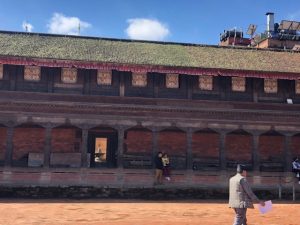Falcha in Newari Culture in Nepal

Nestled within Nepal’s vibrant cultural tapestry, the Newari people have long upheld a fascinating tradition known as Falcha. This unique architectural feature, deeply rooted in Newari heritage, is a testament to this ancient civilization’s ingenuity and artistry. Falcha, a multifunctional community space, has played a pivotal role in shaping Newari communities’ social, religious, and cultural fabric across Nepal.
Stock Photos and Videos of Nepal
Shutterstock Alamy Pond5 Dreamstime 500px
Introduction to Newari Culture
Rich Heritage
The Newari people are one of the oldest ethnic groups in Nepal, with a history that stretches back centuries. Their culture is known for its intricate art, architecture, and deeply rooted traditions.
Diverse Practices
Newari culture encompasses a wide range of customs, from elaborate festivals and religious ceremonies to unique culinary traditions and traditional crafts, all of which contribute to the region’s vibrant cultural tapestry.
Community-Centered
At the heart of Newari culture lies a strong sense of community, with Falcha serving as a central gathering place for social, religious, and cultural activities.
What is Falcha?
Definition
Falcha is a unique architectural structure found in Newari communities across Nepal, particularly in Kathmandu Valley. It serves as a multifunctional community space, hosting a variety of social, religious, meditation, and cultural activities.
Structural Elements
Falcha typically features a distinctive wooden design, with intricately carved doors, windows, and roof structures that reflect the Newari’s artistic prowess and attention to detail.
Spatial Organization
The layout of a Falcha is often organized around a central courtyard, allowing for optimal use of space and facilitating community gatherings and events.
The Significance of Falcha
Social Hub
Falcha serves as a central gathering place for Newari communities, fostering social interactions, shared experiences, and a strong sense of belonging.
Religious and Cultural Significance
Many Newari religious and cultural ceremonies, such as festivals and rituals, are often held within the sacred confines of the Falcha.
Architectural Masterpiece
The intricate design and craftsmanship of Falcha structures are a testament to the Newari’s rich architectural heritage and artistic prowess.
Architectural Elements of Falcha
Carved Wooden Doors and Windows
Falcha structures are renowned for their elaborately carved wooden doors and windows, featuring intricate designs that showcase the Newari’s exceptional woodworking skills.
Ornate Roof Structures
The roofs of Falcha often boast intricate tiered designs and ornate decorative elements, adding to the overall visual appeal and architectural grandeur of these structures.
Courtyard Layout
The central courtyard is a defining feature of Falcha, serving as a multifunctional space for community gatherings, religious ceremonies, and everyday social activities.
Symbolic Motifs
The architectural design of Falcha often incorporates symbolic motifs and patterns that hold deep cultural and spiritual significance for the Newari people.
Falcha in Newari Festivals and Celebrations
Cultural Performances
Falcha serves as the stage for Newari cultural performances, such as traditional dances, music, and theater, during various festivals and celebrations.
Religious Ceremonies
Many Newari religious rituals and ceremonies, including puja (worship) and other sacred rites, are often conducted within the sacred confines of Falcha.
Community Gatherings
Falcha provides a central gathering space for Newari communities to come together, share meals, socialize, and strengthen their cultural bonds during festivals and celebrations.
Decorative Elements
Falcha structures are often adorned with vibrant decorations, such as colorful fabrics, flowers, and other traditional ornaments, during Newari festivals and celebrations.
Preservation and Challenges
Urbanization
Rapid urbanization and modernization in Nepal have posed a significant threat to the preservation of Falcha, as traditional Newari communities and their architectural heritage face increasing pressure from development.
Lack of Funding
Limited financial resources and funding for the restoration and maintenance of Falcha structures have made it increasingly challenging for Newari communities to preserve their architectural legacy.
Community Engagement
Engaging the younger generation of Newaris in the preservation and appreciation of Falcha is crucial, as the success of these efforts relies on the continued commitment and involvement of the community.
Conclusion and Future Outlook
Cultural Resilience
Despite the challenges faced, the Newari people have demonstrated remarkable resilience in preserving their cultural heritage, including the iconic Falcha structures that have stood the test of time.
Balanced Development
As Nepal continues to evolve, the preservation of Falcha and other Newari architectural treasures must be integrated into the country’s development plans, striking a balance between modernization and the protection of cultural identity.
Global Recognition
The unique and captivating nature of Falcha has the potential to garner international recognition and support, fostering greater awareness and appreciation for Newari culture on a global scale.
DISCLAIMER: This was generated with the help of AI. This technology is new and constantly improving. Please verify the accuracy before sharing.
